Increasing your employees’ digital access can improve their health


There’s growing recognition that a broad range of social, economic, and environmental factors shape people’s opportunities and barriers to engage in healthy behaviors. Broadband access, which includes both internet and device access, has been called the “super social determinant of health” because of its wide-ranging health implications. Social determinants of health refer to the circumstances surrounding your employees’ lives that impact their total health in addition to their health behaviors and health care.

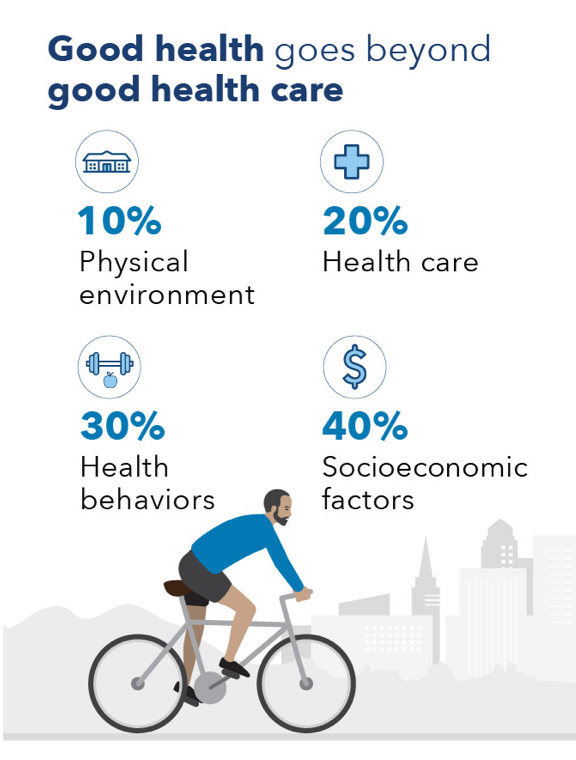
Our increased reliance on internet connectivity for health care
The pandemic cemented in society a trend that had been accelerating for years — the necessity of internet connectivity for daily life. To fully engage in essentials like health care, education, employment, and banking, individuals increasingly rely on high-speed internet access and devices.
The use of virtual care grew rapidly during the COVID-19 pandemic and more than two years later usage remains higher than pre-COVID levels and it looks to be more than a trend. Across the health care industry, use of telehealth has largely stabilized since the onset of the pandemic, ranging from 13 to 17 percent of care delivered across all specialties.1
People who could, and did, take advantage of virtual care reaped the benefits of safety, convenience, and savings that come from avoiding unnecessary in-person visits, travel, parking, and time away from work. Connected patients were better positioned for timely care, especially those with chronic conditions.
Widening digital inequity
The benefits of virtual care ensure that it will continue to be important in helping patients achieve their best health. For millions of Americans, however, stark differences in technology adoption and digital participation may leave people behind and contribute to widening inequities.
Just as digital equity can have positive impacts on health, digital inequities may increasingly lead to poorer outcomes for those who lack access to, or struggle with, internet connectivity.

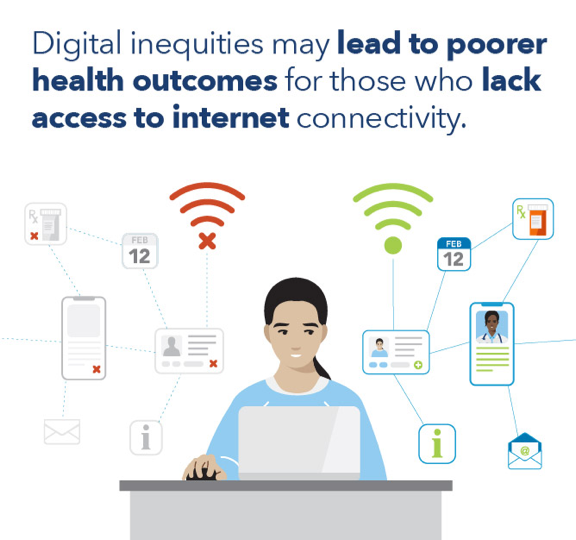
Lack of access to broadband
The risk of digital inequity has grown significantly across society, stunting personal and professional growth for many people. More than 19 million households struggle with access to high speed broadband and 32 million have limited or no digital literacy skills to use the internet effectively.2
Factors contributing to slower adoption among certain populations include the high cost of broadband plans and devices. With an average cost of about $68 per month for a wired broadband plan in the U.S., today’s plans are unaffordable for people with low incomes. Nearly a third of households can’t afford their internet subscription.3
Poor internet speed and unreliable connections also limit access. At Kaiser Permanente we estimate that households need a minimum network bandwidth of 20-30 MBPS to engage in a video visit with a care provider. However, we found that most plans under $50 a month don’t offer speeds of 25mbps, the FCC’s minimum definition for broadband.4

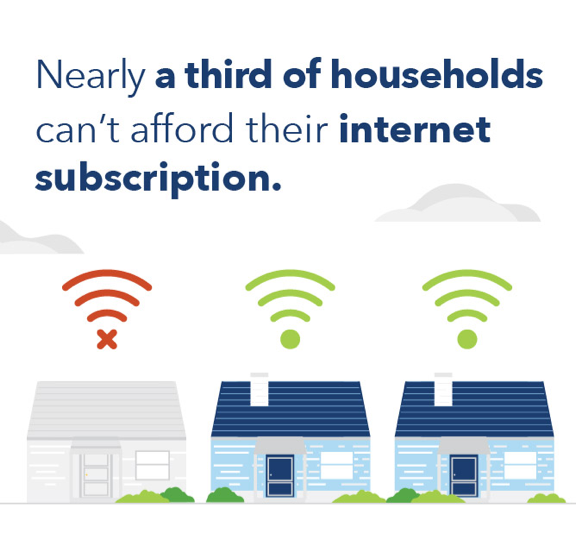
Additional causes of digital inequity
Digital equity is more than access to broadband or connected devices. Some choose not to engage because they are uncomfortable for a variety of reasons, including language barriers or reluctance because of lack of skills or trust. Not only does this prevent someone from engaging in digital care, but it can also be a barrier to finding a job, applying for housing, or engaging in online learning opportunities.
Other inequities impacting employee health
Most people affected by digital inequity experience other kinds of inequities as well. They may not have enough money, education, or support to fully participate in society, or they are marginalized because of their gender, race, ability, or age. When it comes to health care, all these inequities impact people’s digital participation.
The burden of poor health is unevenly distributed in the United States by design. Some of the main contributing factors to poor health — poverty, inadequate housing, hunger – and increasingly the digital divide — are driven by a long history of institutional racism and discrimination.
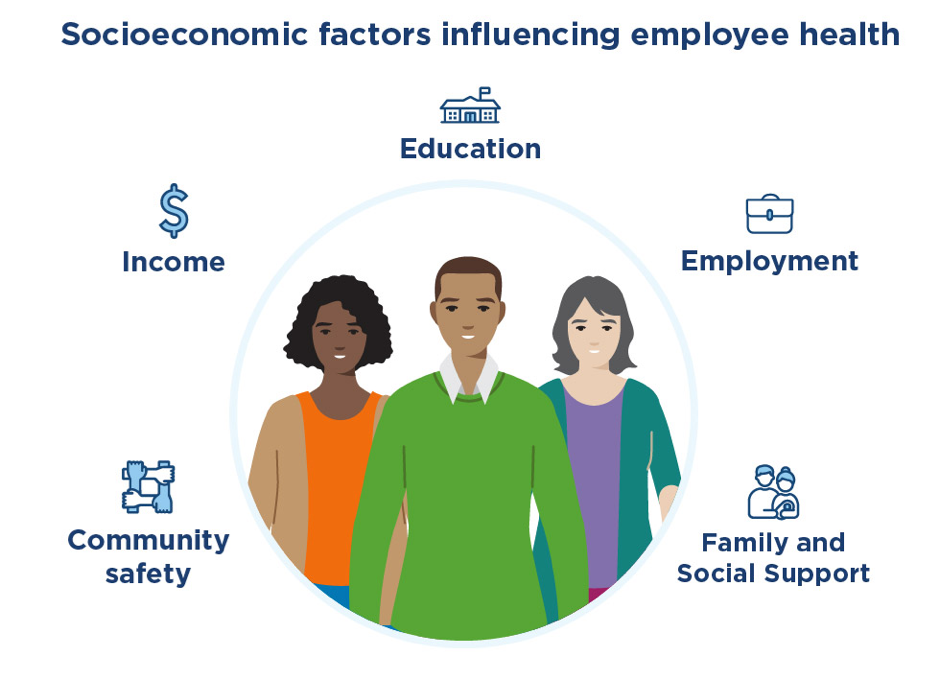
How health care organizations can increase digital equity
Digital equity gaps are impossible to ignore. But momentum favors wide-spread efforts to provide equal opportunity for individuals to benefit from technologies that improve health. The promise of delivering more personalized, convenient, and affordable care is driving innovation across the health care industry. For example, virtual care should be more than just video visits. Exploring a multimodal and patient-centered approach to telehealth, including the use of phone visits, chat functions, and secure email exchanges with clinicians can help mitigate the disparities that prioritizing video visits can create.
While broadband access is not our core business, health care providers and plans can do more to raise awareness of government subsidy programs and help members enroll. Programs like the Affordable Connectivity Plan and LifeLine, that can make it easier to pay for internet and devices, are underutilized due to lack of awareness.
How employers can increase digital equity
Employers can help make employees aware of subsidy programs or offer stipends toward the cost of a monthly broadband subscription or the purchase of a device.
Lack of information and lack of familiarity with tools may keep your employees from trying any form of virtual care. Often this is the final barrier to digital equity. Employers committed to helping their workforce engage in and benefit from virtual care can help remove barriers by increasing digital skills and improving digital literacy.
Digital tools allow people new ways of participating in their health and in their world. To make this vision a reality and to ensure digital health engagement is a choice for everyone requires investment, innovation, and most importantly cross-sector collaboration.

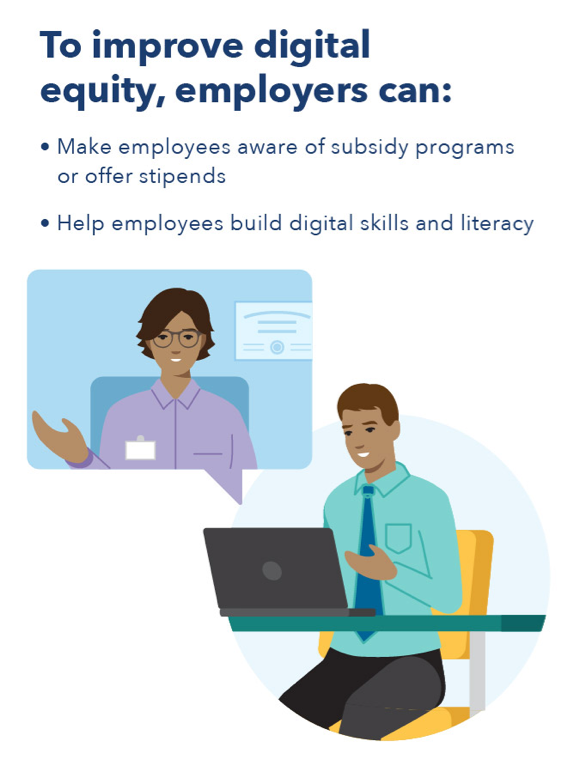
Kaiser Permanente is committed to understanding the experiences of those facing digital inequities among our membership and beyond. By building evidence around this critical issue and leaning into initiatives that can help people here and now, we aim to improve access and deliver choice for virtual care, drive equitable health outcomes, and measure the resulting impact to ensure Kaiser Permanente’s digital offerings and platforms are inclusive.
About our expert

Anand Shah, MD, MS, is vice president of social health at Kaiser Permanente. In this role, Dr. Shah is responsible for developing and implementing Kaiser Permanente’s national social health strategy. His areas of focus include driving the adoption of standardized screening tools, scaling evidence-based interventions, and integrating into the organization’s electronic health record system a platform to connect members with social services and other community-based programs that alleviate food insecurity, homelessness, and other social needs.
Resources you may find helpful
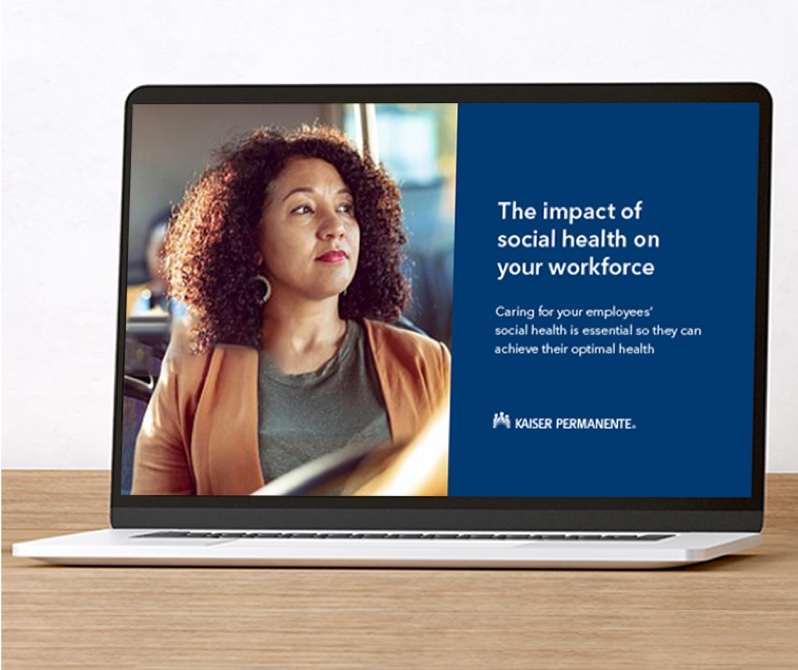


- 1
Bestsennyy et al., “Telehealth: A quarter-trillion-dollar post-COVID-19 reality?, McKinsey & Company, July 9, 2021.
- 2
“Advancing Digital Equity for All: Community-Based Recommendations for Developing Effective Digital Equity Plans to Close the Digital Divide and Enable Technology-Empowered Learning,” US Department of Education Office of Educational Technology, September 2022.
- 3
See note 2.
- 4
Kaiser Permanente internal data.
Kaiser Permanente health plans around the country: Kaiser Foundation Health Plan, Inc., in Northern and Southern California and Hawaii • Kaiser Foundation Health Plan of Colorado • Kaiser Foundation Health Plan of Georgia, Inc., Nine Piedmont Center, 3495 Piedmont Road NE, Atlanta, GA 30305 • Kaiser Foundation Health Plan of the Mid-Atlantic States, Inc., in Maryland, Virginia, and Washington, D.C., 2101 E. Jefferson St., Rockville, MD 20852 • Kaiser Foundation Health Plan of the Northwest, 500 NE Multnomah St., Suite 100, Portland, OR 97232 • Kaiser Foundation Health Plan of Washington or Kaiser Foundation Health Plan of Washington Options, Inc., 1300 SW 27th St., Renton, WA 98057
Congratulations! You have successfully saved this item.
To access your Saved items any time, open the "Saved Items" folder in the top right corner of the page.
It seems that you do not have cookies enabled. Please enable cookies to make use of all of our site's functionality.
You haven't collected any items yet.
- Save Content
Click the "Save" icon next to the content you want to revisit later.
- Access Your Saved Items
Click on the "Saved Items" link at the top of the page or use the URL we create for you.
Be sure to copy and paste the URL we create for you before you leave the site.
1-5 of 14
Your Link
After leave the site, your saved items will be saved for you at this URL:
http://business.preview.dpaprod.kpwpce.kp-aws-cloud.org/saved-items?user=Share your list
Show Disclaimer +


